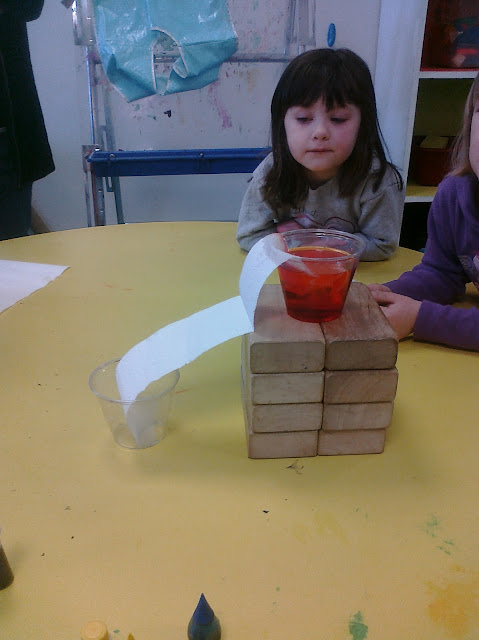1. Why preschool should not be like school This article is from slate.com and is about why the push for children to have formal education at earlier and earlier ages hurts them.
2. Seperate but Equal? This is an article from the Rochester Democrat and Chronicle from this past Sunday; It is about how (in Rochester) that schools are still predominately segregated with impoverished African- American students in city schools and middle class Caucasian students in the Suburban Schools; It goes on to discuss the negative impact it has specifically on city children but also on the suburban children (though less significantly) as well as the problem it brings for all of the city and suburbs. It is specifically about Rochester but points out that many many cities in the Nation are the same way. It is a very well written article, bound to get one thinking about these problems and what can be done. I remember when I was doing part of my student hours at School of the Arts in Rochester noticing the incredible disparity between the many African American students and the few Caucasian students. Many of the African American students, in fact the overwhelming majority, lived in a nearby neighborhood and were (many of them) dealing with poverty, while the few Caucasian students that attended lived in the huge mansion- like houses that decorated the "nice" residential areas of the city. Also the difference between working and observing in suburban schools and working and observing in the city schools (we were required to do a lot of each) is incredible. Part of it, I suppose (though this may be an unfair or inaccurate assessment, I am no expert), is based on the difference in culture- but I think that the biggest difference is because of living situations and financial situations. In the suburbs most of the kids have everything they need for school (backpacks, writing implements, notebooks), in Greece schools the driving situation is a mess because hundreds of parents drive their children to school rather than make them "suffer" riding the bus or walking. I know this is a generalization, but overwhelmingly in that school students were "spoiled." Their classrooms were gleaming, they had huge gorgeous facilities, lots of money put into the arts, ample classroom supplies like tissues, and textbooks. In the city schools have very little funding because the people who are taxed for that area have little money themselves. Students do not have notebooks or pencils that they need in many cases. Teachers often do not have the resources they need to teach their best and often end up buying things for their room from their own pockets- after all they need enough tissues in their class, enough paper and folders and pencils and pens for students who have none. The facilities at these schools are often run down, and with the exception of School of the Arts, there isn't always a lot of money put into school music, there is rarely enough staff to best serve students. It goes on and on. The time that I was in these schools was before the recession- so you can just imagine what especially city schools must be like now with the state and city funding for schools being slashed and slashed again.
 |
| Image belongs to Rochester City Newspaper |



















































